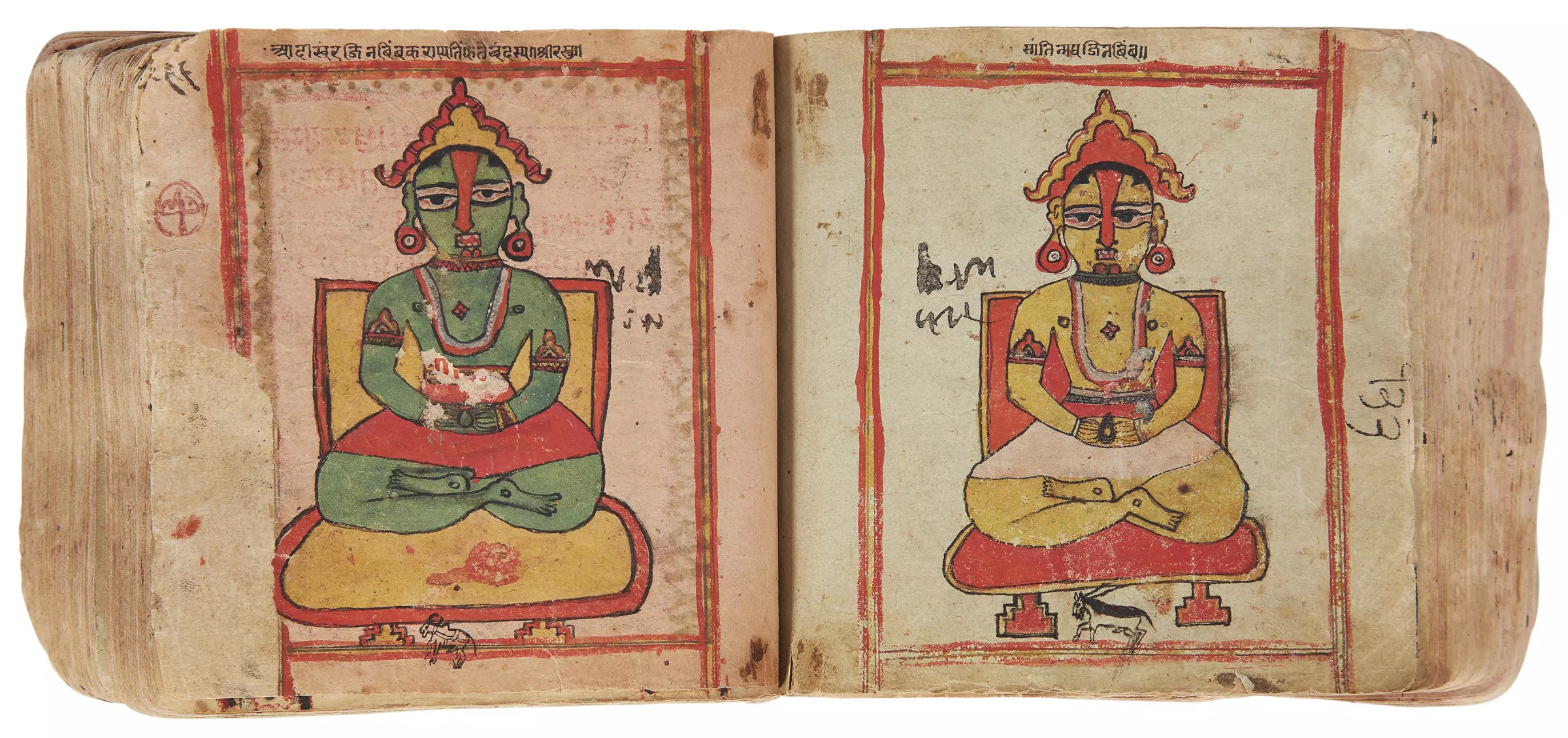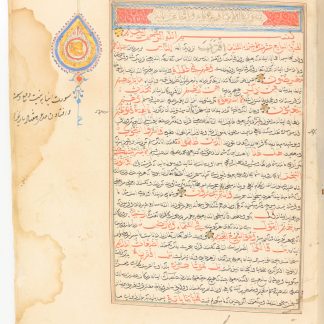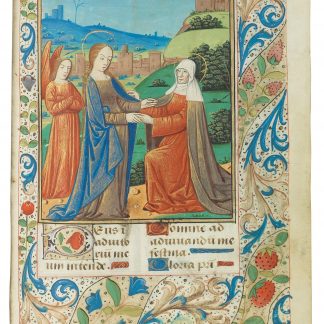The Jina of Jainism, in an illustrated manuscript
[Illustrated Jain manuscript].
145 x 126 mm. 363 ff. Manuscript on dyed paper. Black Devanagari script ruled in red. With 4 full-page paintings of seated figures, and one face. Own-wrappers, loose in a protective stiff paper wrapper.
€ 4,500.00
An illustrated manuscript, distinctively Jain, featuring three seated figures of Jina (also called Tirthankaras), identifiable by the red mark of the Tilaka on their foreheads and by the infinite knot drawn on their chests. Jina are, in the Jain tradition, not gods or avatars, but those who have achieved spiritual liberation. Each Jina has individual identifying iconography, as seen in the present manuscript, including skin colour and an associated emblem. In this case, the emblem is drawn beneath their seated form (each Jina sits in the traditional lotus pose). Though iconography varies, a Jina very like Neminatha appears with blue skin and a Shanka (a ritual conch shell) at his feet. Two other Jina feature a deer (or horse) and a bull (or buffalo) drawn below their figures.
The text itself is likely a related Jain religious tract or mantra, written in several hands of bold Devanagari script. Most leaves are ruled in red and feature a central geometric design, largely a red circle, but some including more intricate figures. Like the illuminations, the text mentions at least one further Jina, in this case Lord Mahavir, the last and latest to achieve the status.
Acquired in 1996 by a private collector from Henry Brownrigg, a London dealer specializing in Southeast Asian literature and listed by the British Library as one of their sources.
Light wear to edges; a few paper repairs. Likely due to an outline in slightly acidic black ink, one of the Jani figures is wanting its lower half, which has split away along the figure's outline, but leaving the face and chest perfectly preserved.







